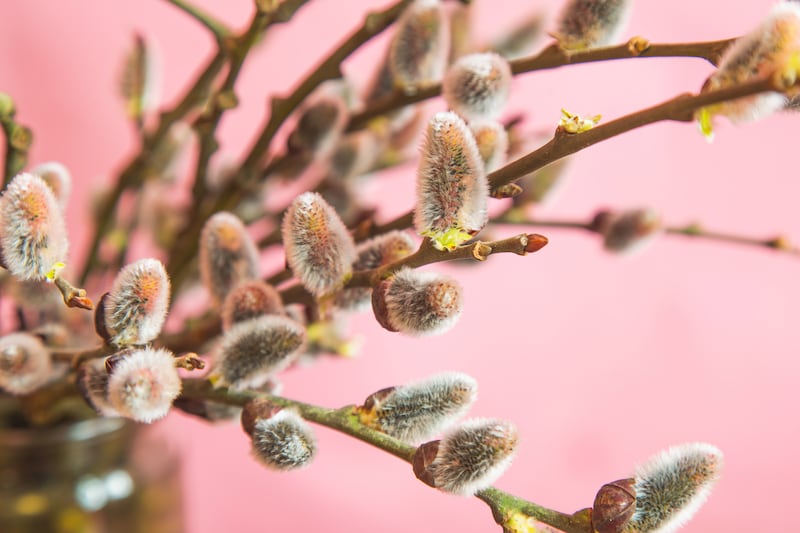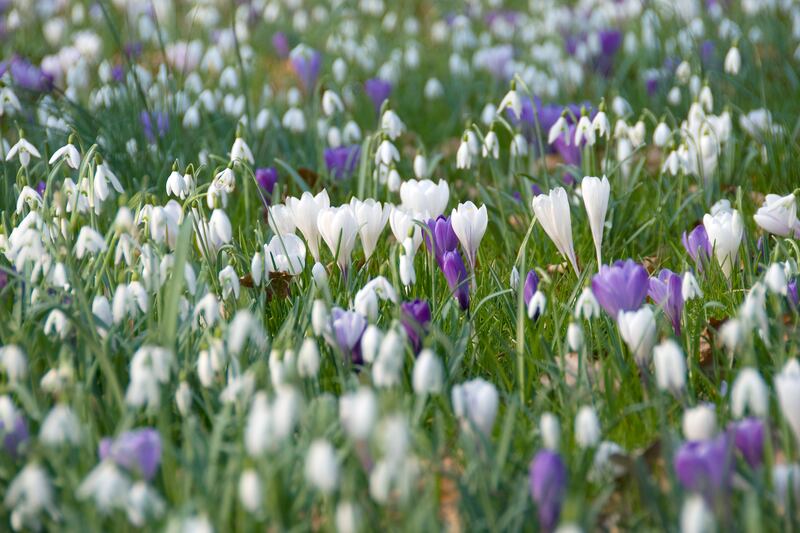And suddenly, just like that, it’s the season of woollen jumpers and log fires, of candlelight and rosehips, of moths fluttering in through open windows and golden bales of barley straw throwing long, autumnal shadows in the farm fields around us.
I’d like to say that I was ready for it but I’m not. Along with pretty much everyone else living in this cool, damp, windy little island of ours, the summer did not live up to my modest expectations. Clinging for too long to the hope – fully expired – that it might eventually improve, it’s hard not to now feel a little robbed. Or to not worry about how climate change has made our Irish weather patterns more unpredictable. And yet, all that said, nature still runs to its own mysterious timetable, one worth studying carefully if we gardeners are to hit the ground running next spring.
So I am galvanising myself and mentally preparing for the slow, mucky, hard work of lifting dahlia tubers as soon as the first hardy frosts cut their tender growth to the ground; of shaking off the loose soil and then placing them in a cool, dark, frost-free space to overwinter. I have fresh seeds ripening on garden plants to collect, label and carefully store for next year. Wild species, too, from the hedgerows and ditches surrounding our farmhouse, whose seed I have carefully earmarked for collection in small amounts.
These aside, there are overgrown flower and vegetable beds to tidy, weed and mulch, and other new areas to begin prepping for next spring by covering them with a thick layer of recycled cardboard or plastic sheeting weighed in place, the organic gardener’s alternative to the toxic quick-fix that is chemical weedkiller. Plus a few vegetable beds in which a crop of green manure is being sown to nurture and protect the soil over winter.
READ MORE
Some tasks I’ve procrastinated about for months. They include trays of abandoned seedlings of short-lived annuals laboriously pricked out and then neglected after the sweet heady rush of optimism that is a quintessential part of early summer. These reproachful reminders that there is never, ever enough time or space to grow everything that you want, need to be thrown on the compost heap.
Other, longer-lived container-grown plants are still waiting impatiently to be given their permanent spot in the garden. They include lots of shrubby plant purchases made over the previous months, now in urgent need of a place to sink their roots: a dozen or more hydrangeas that I will plant along a damp, sunny bank; climbing roses that we will use to romantically shroud the tumbledown old farm outbuildings with their scented blooms; a handsome, evergreen bull bay magnolia (Magnolia grandiflora) that I want to grow against a sunny, sheltered, high wall next to the house, plus some shrubby euphorbias to give winter structure.
Others are already in the ground but need to be moved in the coming weeks to somewhere that suits them better. They include a pretty, pink-budded willow – Salix ‘Mount Aso’ – whose unhappy appearance suggests it needs a spot in cooler, damper soil; and a nearby euonymus that has been sulking all summer.

These aside, the boxes of spring-flowering bulbs ordered in a rush of enthusiasm will soon start to arrive, demanding to be planted. Our plan is to grow drifts of narcissuses in the grassy verge that edges the stony farm track, each year adding more so that one day it will be a ribbon of colour and scent. We dream of sheets of crocuses and snowdrops beneath the old beech trees, and clouds of snake’s-head fritillaries in the damp meadow beneath the house, all of which require the back-breaking work of first planting their fleshy bulbs deep in the ground this autumn like so much buried treasure. The same goes for the seeds of hardy annuals – larkspur, orlaya, ammi – most of which must be sown into modules this month if they’re to stand a chance of being properly productive. The only exception is sweet pea, a ritual that can wait until late autumn.

There’s also a garden shed that urgently needs to be built, foundations for which will be dug later this month if our lovely digger driver is free and the weather permits. Elsewhere there’s an old stone garden wall that needs to be repaired, another to be repointed, slow, painstaking tasks requiring the use of traditional lime mortar. Down by the gurgling river that curls its way briskly along the garden boundary, there are young ash trees, victims of ash dieback, to be felled and chopped up to make firewood. Other species including lime, birch and beech will soon need to be planted in their stead if the herons that have always nested along its leafy banks are to continue to call this little patch of land home.
All of which is a timely reminder that autumn, so romantically described by the poet Keats as the season of mists and mellow fruitfulness, is every bit as much one of mucky fingers and hard physical work. But one of great joy too in dreaming of the magic to follow.
This week in the garden
September is often a very variable month as regards weather, one where an early killing frost can come as soon as mid-month in cooler or more upland parts of the country. So keep a watchful eye on the forecast and bring tender favourites such as cannas, banana plants, argyranthemums and pelargoniums that you want to overwinter indoors under cover of a frost-free shed or glasshouse/polytunnel if frost looks likely.
Similarly, tender vegetable crops growing outdoors such as lettuce, salad leaves and courgettes can be encouraged to crop for longer if covered with a layer or two of horticultural fleece or bionet to protect them from chilly winds and low temperatures.
Dates for your diary
Saturday, September 21st, and Sunday, September 22nd: Garden Open Days at RHSI Bellefield, Shinrone, Co Offaly, former home of garden designer and plantperson the late Angela Jupe, with guided tours of the garden by head gardener Paul Smyth at noon and 2pm each day, plus plant sales and refreshments rhsi.ie
September 21st-October 6th: Mount Venus Nursery Autumn Sale, Mount Venus, The Walled Garden Tibradden, Mutton Lane, Dublin 16. mountvenusnursery.com
Friday, October 4th-6th: Kells Bay Gardens – Southern Symposium IX with an impressive line-up of guest speakers that includes Adam Frost, Scott McMahan, Jimi Blake, Derry Watkins and Raf Lenaerts. Pre-booking essential. kellsbay.ie

















